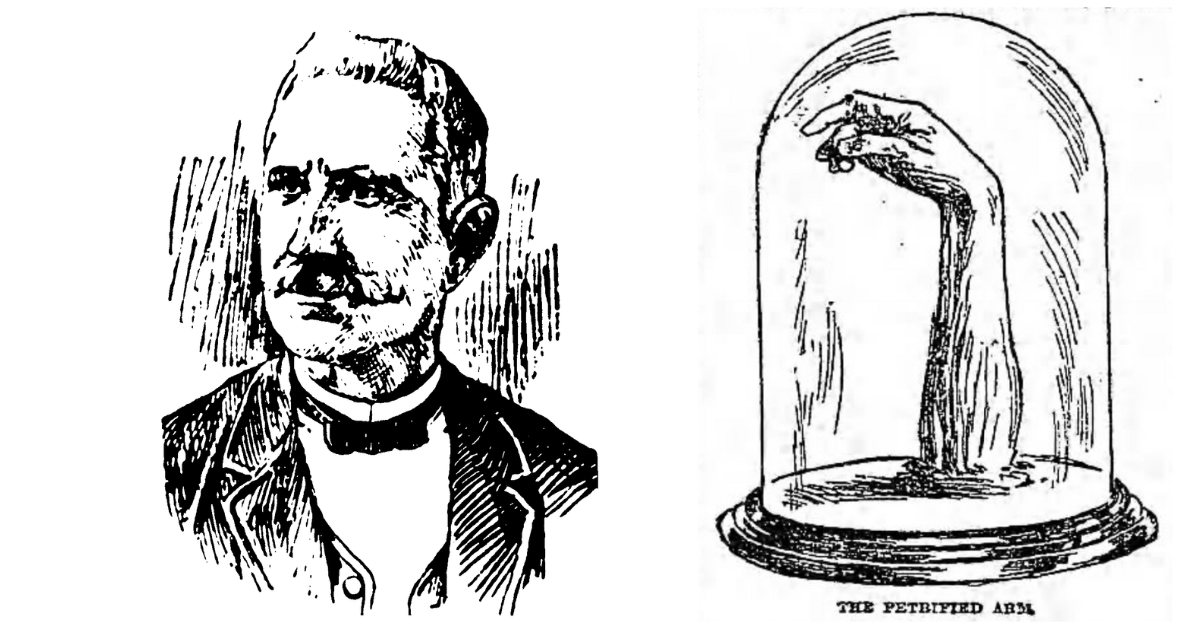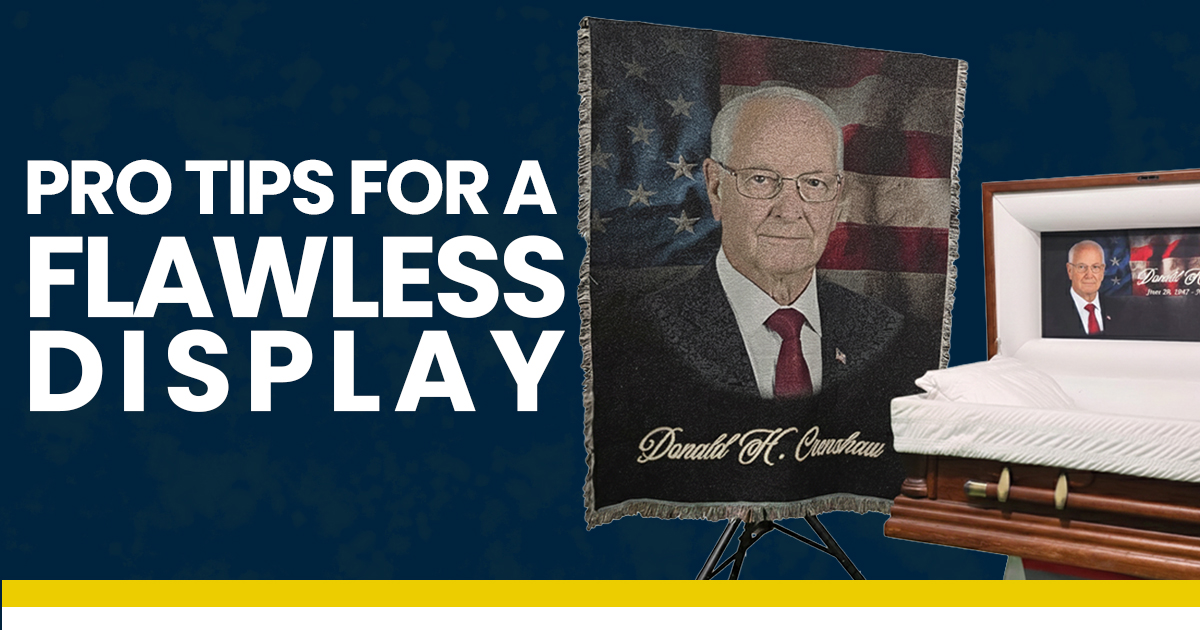11 Fascinating Facts About The Father of Embalming
One of the very first things a mortuary student learns when embarking on embalming training is the name of the father of embalming, Dr. Thomas Holmes — and for good reason. Although he was not the first person to experiment with various body preservation techniques, he popularized arterial embalming during the American Civil War by developing and applying an arsenic-based solution to preserve soldiers’ bodies for transport home. His work changed mortuary practices and laid the foundation for the modern funeral industry.
These distinctions are only the tip of the iceberg when it comes to the life and times of Dr. Thomas Holmes. Through first-hand newspaper reports, we’ve uncovered 11 more fun and fascinating facts about the father of embalming, listed here in no particular order:
1. He did not want to be embalmed
When Holmes died on January 8, 1900 at age 83 after “an illness of more than two years,” the headline of his New York Tribune death notice was “Dead Embalmer Wants No Embalming.” The notice added that this “last wish” was in spite of Holmes’ status as the father of embalming and the fact that he had embalmed “about a thousand bodies” (or 28,400 soldiers” as another outlet reported in 1900).
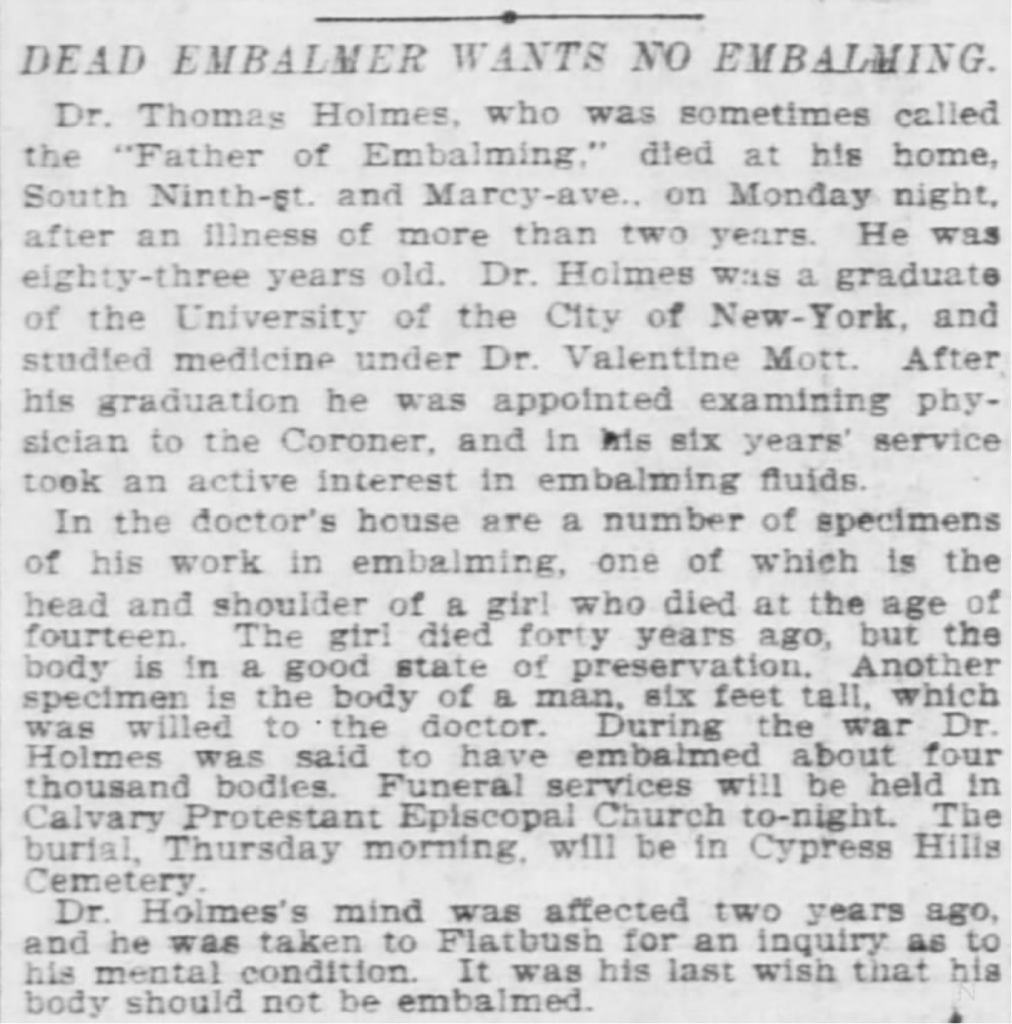
2. He made very little money from his accomplishments, and died a “poor man.”
In 1901, a Washington Post reporter wrote about his 1896 visit to Holmes’ home, saying, “He was living at that time in great poverty, in the miserable little frame hut on Marcy Avenue in Brooklyn where he died.” Another article claimed that while practicing as a physician in New York prior to the Civil War, Holmes purchased property (including the Marcy Avenue lot) that was “at one time said to be worth $100,000.” It is thought that he lost his fortune after committing to his embalming research… as seen in the next item.
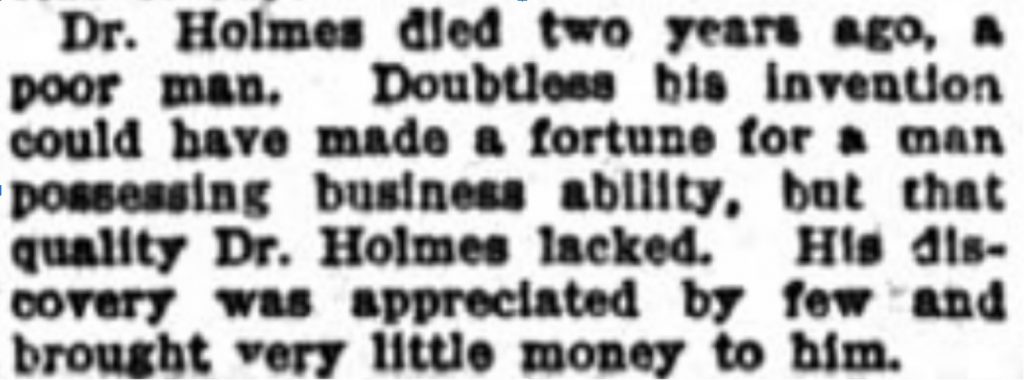
3. He once spent $17,000 on beef
After Holmes’ death, it was reported that “at one time he thought that he could preserve fresh beef and purchased for the purposes of experimentation an entire cargo of beeves from Texas. By this purchase the doctor lost nearly $17,000, because the beef all had to be destroyed.”
4. The method he used to embalm Lincoln was amazingly effective, but secret
When the body of Abraham Lincoln was exhumed in 1901 for the purpose of reinterment in a tomb, his body was “found to be in a most excellent state of preservation” thanks to his embalmer, Dr. Thomas Holmes. The exact process Holmes used to embalm Lincoln, though, is still a secret, although journalists wrote that it was a “radical departure from the ordinary mode of embalming by means of fluids.” Instead, Holmes “placed the body in a glass case and subjected it to pressure of a peculiar gas, the action of which hardened the flesh to a degree approaching the toughness of leather.”
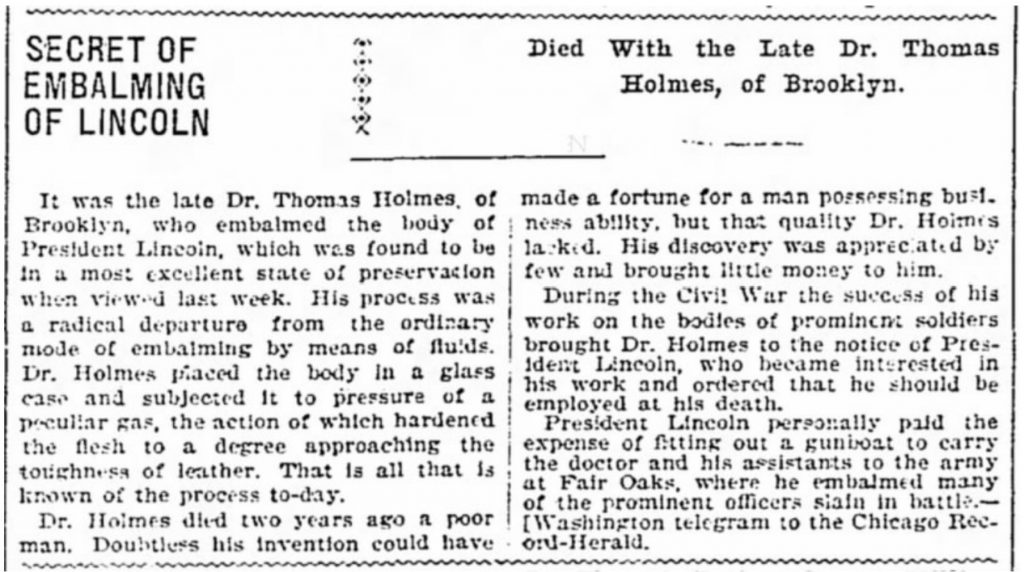
5. He secured several patents throughout his lifetime.
Holmes’ patents include:
- Apparatus for Filling Blood-Vessels of Dead Bodies (1861)
- Elastic and Deodorizing Receptacle for Dead Bodies (1863)
- Deodorizing Coffin (1864)
- Improvement in the Process of Preserving Dead Bodies (1877)
- Embalming Syringe (1890)
- Embalming Mixture (1891)
6. Holmes became known for displaying some odd things in his storefront windows.
Supposedly to promote his embalming services, for many years Holmes posted to his storefront a plaque listing the names of prominent Union soldiers he had embalmed during the Civil War. He is also said to have kept an embalmed dog in a glass case in his front window for several years, which “began to excite the curiosity of children going to school.”
7. In his mid-70s, Holmes was committed to a mental asylum for “dementia.”
In 1896, after a “little family difficulty,” Holmes spent two weeks as a mental patient at Flatbush Hospital in Brooklyn, where “insanity experts” examined him and determined he had developed a “slight attack of dementia.” After a few days these doctors declared that the “cause of the attack had disappeared.” After his discharge, he told a reporter that he was “contemplating taking a trip to Key West, with a view to embalming bodies of those killed in the Cuban-Spanish war.” He also said he hoped to “conduct some of his experiments” at the Flatbush facility.
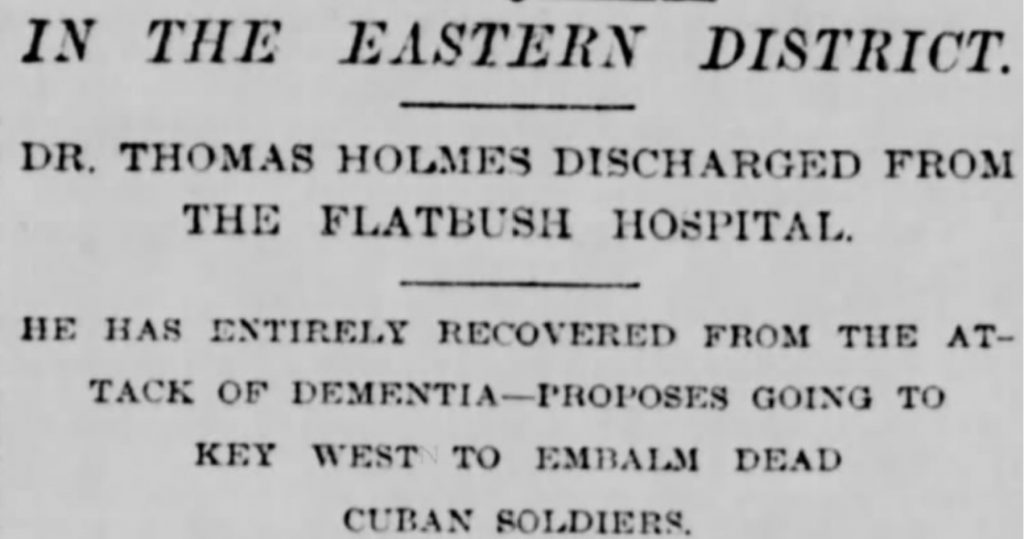
8. Holmes was sometimes on the wrong side of the law
The aforementioned “family difficulty” that led to Holmes’ very short stay was a little more complicated than the previous article let on. His relatives requested that he be committed after he “made an unsuccessful attempt to kill his wife” with a revolver he had begun keeping by his side, barricaded himself behind a door with an axe in his hand and threatened to kill anyone trying to enter his house. This activity was presumed to have stemmed from his bank foreclosing on his mortgages and his brother-in-law being appointed manager of his estate and his subsequent threat to commit suicide by poisoning himself near his vault in Cypress Hill Cemetery so “it won’t be much work to get me inside.” This situation ultimately resulted in his arrest for … intoxication. The prior year, Holmes was arrested for “keeping a body on his premises for more than two months.” He was released when authorities confirmed that he had obtained the body from Bellevue hospital for “scientific purposes.”
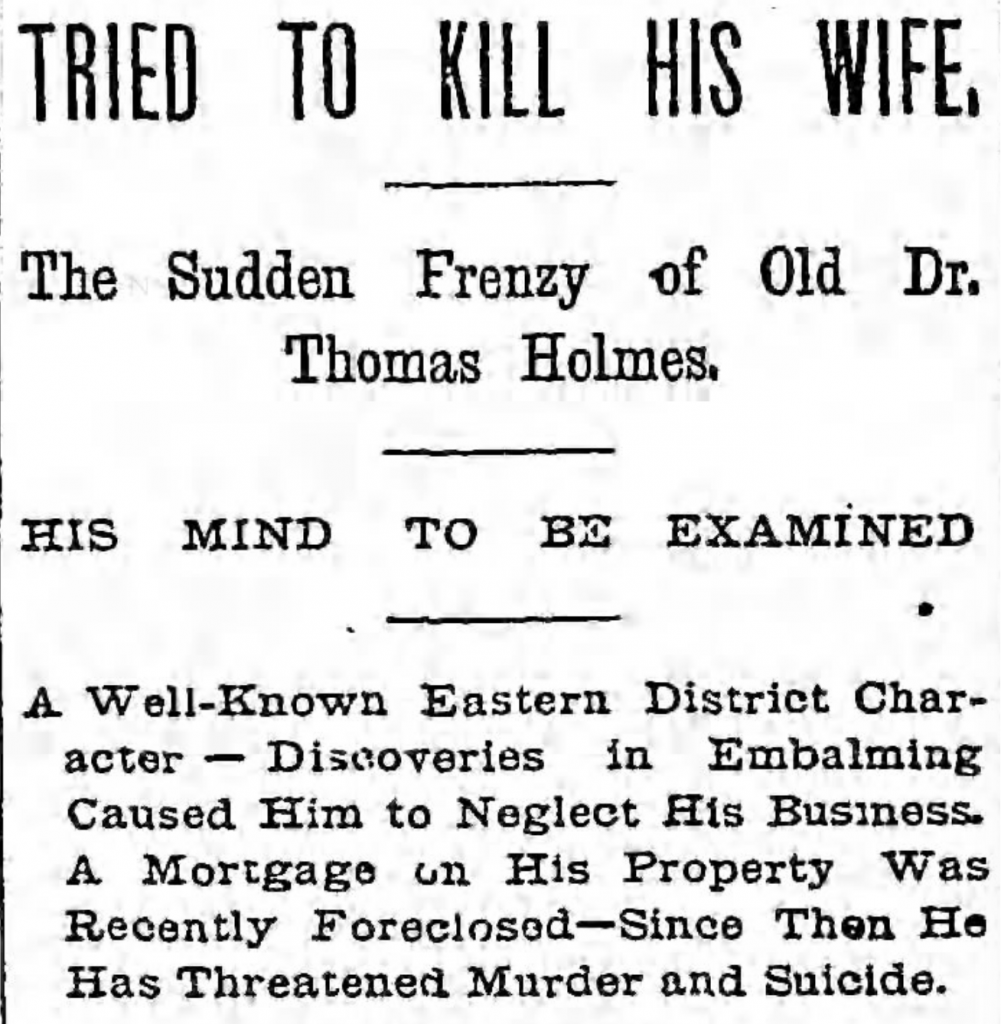
9. His last major embalming experiment was a “new petrifying scheme” involving “the antiseptic gas process.”
From the late 1880s until his sharing of a “petrified arm” in 1895, Holmes worked to perfect an embalming method that would eliminate “danger from contagion” and use materials that could be easily and cheaply manufactured and accessed.
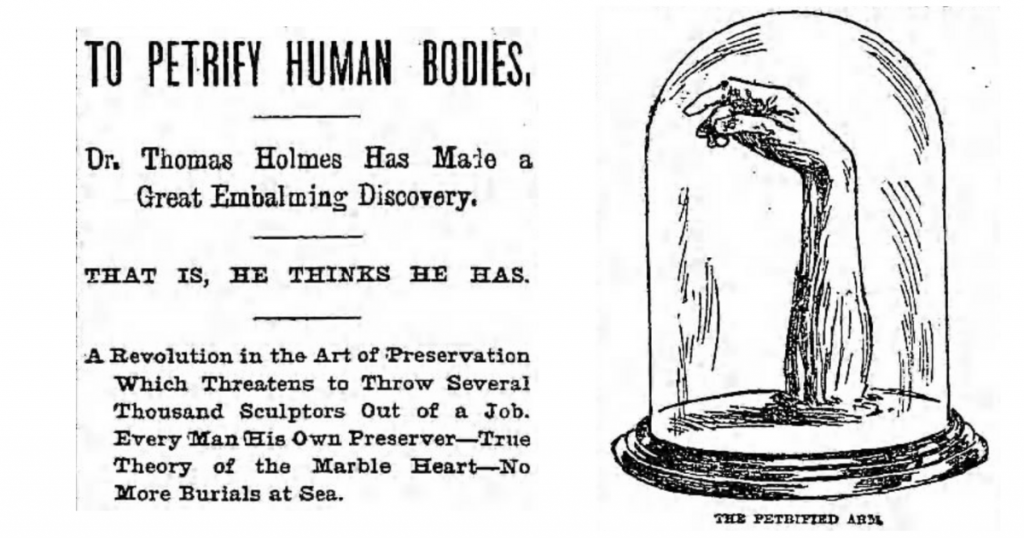
10. Authorities found various human and animal body parts in Holmes’ home after his death.
Eleven months after Holmes died in his home, police, “through the board of health” finally removed the specimens stored in his basement morgue. They found: “The mummified body of a male child, apparently 11 years old, with head, shoulders and arms missing. Had evidently been severed from the body with a saw and as hard as wood. […] The body was mummified to such an extent that a crosscut saw went through it like pine wood. […] The body was sawed across the bottom and then between the legs and spine […] With these remains were those of three other children. There was also removed from the place at the time two mummified bodies of monkeys and one head of a monkey.” Even more than a decade after his death, as authorities were demolishing the structure, excavators came across several “petrified toes.”
11. Holmes had several side gigs.
Although perfecting the embalming process was Holmes’ lifelong pursuit, he also dabbled in other businesses and inventions. One blogger wrote, “According to Mary Roach and her excellent book Stiff: The Curious Lives of Human Cadavers, Dr. Holmes tried different ventures including opening a drugstore, running a health spa, and launching a root-beer business.” He is also said to have placed ads in “mortuary trade journals with his latest invention: a canvas body bag that could also double as a sleeping bag.” And in 1895, he told a reporter that he was “about to organize a company for the manufacture of glass caskets lighted by electricity, by which the living can view the faces of their dead friends.”


